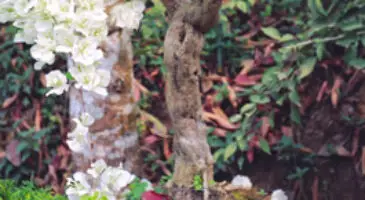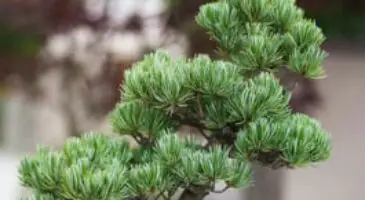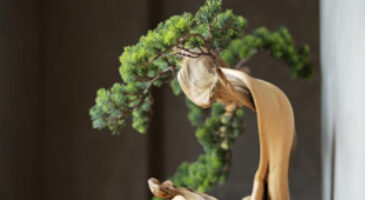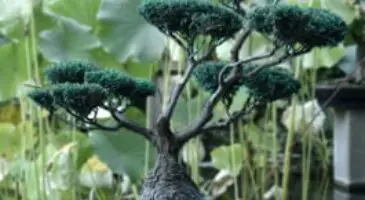Table of Contents
Previous guide, we discussed the pros and cons of using vermiculite for bonsai. Can I use Miracle Gro on bonsai tree too?
Growing bonsai trees means you need to use top quality fertilizer. Learn if Miracle Gro is ideal for bonsai trees or not.
Should you use Miracle Gro for your bonsai trees
The truth is that Miracle Gro doesn’t really need to be used on bonsai trees. Just so you know, Miracle Gro doesn’t contain any essential trace nutrients crucial for promoting proper growth of your bonsai. Although Miracle Gro is one type of high-level fertilizer, this doesn’t have adequate levels of phosphorus. Weak roots occur if the fertilizer lacks phosphorus.
Is Miracle Gro healthy for your bonsai trees
Miracle Gro is not really healthy for bonsai trees. In fact, there are many other choices you can consider to guarantee the overall health of your domestic bonsais.
Many bonsai plants are usually kept indoors so it is important to nourish them properly because of the restricted space accessible to the roots. There are three essential nutrients for promoting the growth of bonsai trees and these are nitrogen, phosphorus, and potassium.
The high levels of potassium and nitrogen present in Miracle Gro can help plants in growing large flowers and leaves yet the absence of phosphorus can make the bonsai lack proper balance.
It is also not recommended to grow bonsai with Miracle Gro soils since soils not specifically made for bonsai may cause root rot because of issues with moisture control.
If you are a new bonsai tree grower, it is best to avoid experimenting with the use of Miracle Gro ratios and save it for later when you become more experienced.
But, there are some varieties of bonsai trees that can survive when using fertilizers not specific for bonsai. It is still not recommended to use Miracle Gro because of certain soils used.
What type of fertilizer is best for bonsai trees
Nutrient level variations depend on whether it is an inorganic or organic fertilizer. Organic fertilizers contain plant and animal-based ingredients that offer natural sources of nutrients. Inorganic fertilizers can lead build up of salt in plant roots that can result to poor plant health and damage.
Solid fertilizers are condensed and nutrients are released overtime, increasing the risks of burning roots because of overfeeding.
The best choices for gardening are liquid fertilizers since these are more controlled nutrient sources. Bonsai fertilizers come in liquid and solid forms alike as pellets and concentrates.
There are several popular brands in the bonsai community. Although all of them contain nutrients required for growth and maintenance, the different forms are beneficial according to the bonsai tree in question.
Bonsai fertilizers are usually formulated and marketed as a form of time-release fertilizers. These fertilizers release nutrients over long periods of time between 2 and 4 months.
How do you fertilize broadleaf bonsai trees
Broadleaf bonsai trees lose leaves little by little, with new leaves replacing them all year-round, whatever the growing season is. Bonsai trees that belong to this category that are perfect for beginners include the famous fig bonsai, sweet plum bonsai, and jade bonsai trees. You can choose from 26 broadleaf bonsai tree categories.
Fig or ficus bonsai trees grow best outdoors or indoors. These don’t tolerate colder climates and require full exposure to the sun. They also need abundant watering once the soil starts to dry. Fertilization is required every couple of weeks during summer then every 4 weeks during winter.
You can also use grow jade bonsai outdoors and indoors and they thrive in hotter climates. You should never expose these to temperatures lower than 40 degrees Fahrenheit. Their leaves can retain moisture well, that is why you should let the soil dry first before watering. These trees must be fertilized once a month and moved to a different pot every other year.
You can keep sweet plum bonsai trees indoors all year or place them outdoors in semi-shade. Mist the soil and tree base with water. Fertilization must be done every week when using liquid fertilizers or every 4 weeks if using solid fertilizers.
How do you fertilize conifer bonsai trees
Pine or conifer bonsai trees are like other conifer plants that are evergreen with needle-like growth. Juniper bonsai and pine bonsai are beginner-friendly conifer bonsai trees.
This category has fewer varieties with just 10 bonsai trees for you to choose from. The juniper bonsai trees can grow best with full sun exposure outdoors. These should be watered by misting with water regularly. Fertilize once a week using liquid fertilizer or once every month using solid fertilizer pellets. These bonsai plants must be repotted every couple of years to prevent drainage problems.
Pine bonsai must be placed in full sunlight outdoors and misted with water regularly. They need good drainage to prevent root rot due to moisture. These must be fertilized every 4 weeks from spring to summer until the hardening of the second candle growth. Fertilizing must resume in autumn season.
Pine and juniper bonsai trees require protection during winter season. You can do it with plant cover available in most nurseries and gardening centers.
How do you fertilize deciduous bonsai trees
Deciduous bonsai trees shed leaves when in the fall when the growing season ends every year. The Chinese elm bonsai tree is the category’s beginner-friendly tree. You can choose from 24 deciduous bonsai tree species.
Chinese elm bonsai trees grow best in colder temperatures and thrive in sun and partial shade or full sunlight. These cannot endure overwatering or drought. You should not water it under the soil becomes dry enough. Apply generous amounts of fertilizer through summer and spring seasons.
The bottom line
Miracle Gro cannot really be considered as the best choice for your bonsai trees.
However, the good news is that it is not really that hard to look for the right maintenance supplies and fertilizer. It is important to know the specific needs of every bonsai tree in order to provide them with proper care.
Fertilizers with adequate nitrogen, phosphorus, and potassium are essential for their survival.



